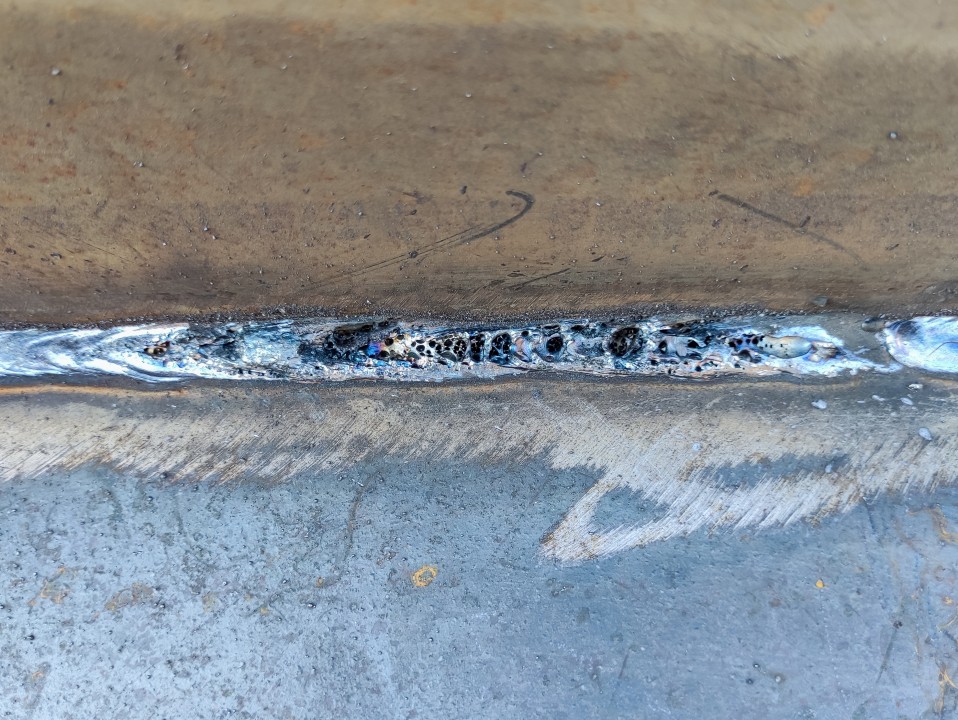Comprehensive Overview: What is Porosity in Welding and Exactly How to stop It
Comprehensive Overview: What is Porosity in Welding and Exactly How to stop It
Blog Article
Porosity in Welding: Identifying Common Issues and Implementing Finest Practices for Avoidance
Porosity in welding is a prevalent concern that typically goes unnoticed till it creates significant problems with the stability of welds. This typical defect can compromise the stamina and durability of bonded structures, presenting safety dangers and resulting in costly rework. By comprehending the root triggers of porosity and applying effective prevention techniques, welders can significantly enhance the high quality and integrity of their welds. In this discussion, we will certainly explore the key elements adding to porosity formation, analyze its destructive impacts on weld performance, and discuss the most effective practices that can be adopted to minimize porosity incident in welding processes.
Usual Root Causes Of Porosity

Using unclean or damp filler products can present impurities into the weld, adding to porosity problems. To mitigate these common reasons of porosity, complete cleaning of base metals, appropriate securing gas choice, and adherence to optimum welding criteria are important practices in accomplishing high-quality, porosity-free welds.
Impact of Porosity on Weld Quality

The visibility of porosity in welding can substantially endanger the architectural honesty and mechanical buildings of welded joints. Porosity produces spaces within the weld metal, compromising its overall toughness and load-bearing ability. These spaces act as anxiety concentration points, making the weld much more prone to breaking and failing under applied loads. Additionally, porosity can decrease the weld's resistance to rust and various other ecological factors, additionally reducing its longevity and performance.
One of the main effects of porosity is a decrease in the weld's ductility and sturdiness. Welds with high porosity levels often tend to exhibit reduced influence toughness and lowered capability to deform plastically prior to fracturing. This can be particularly worrying in applications where the welded elements undergo vibrant or cyclic loading problems. In addition, porosity can hamper the weld's capacity to successfully transmit forces, causing premature weld failing and potential safety threats in essential structures.
Ideal Practices for Porosity Avoidance
To boost the architectural honesty and top quality of welded joints, what certain steps can be applied to reduce the event of porosity during the welding procedure? Porosity prevention in welding is essential to guarantee the honesty and strength of the last weld. One effective technique appertains cleansing of the base metal, getting rid of any type of pollutants such as rust, oil, paint, or dampness that might lead to gas entrapment. Making sure that the welding check this tools remains in great problem, with clean consumables and suitable gas flow rates, can additionally considerably decrease porosity. Additionally, preserving a stable arc and regulating the welding parameters, such as voltage, current, and travel rate, assists develop a regular weld pool that reduces the risk of gas entrapment. Using the right welding technique for the specific product being bonded, such as readjusting the welding angle and gun placement, can better protect against porosity. Regular examination of welds and immediate remediation of any kind of concerns recognized during the welding procedure are crucial techniques to protect against pop over to these guys porosity and generate high-grade welds.
Importance of Correct Welding Techniques
Implementing proper welding techniques is critical in making certain the structural stability and quality of bonded joints, constructing upon the foundation of efficient porosity avoidance steps. Excessive warmth can lead to raised porosity due to the entrapment of gases in the weld swimming pool. Additionally, making use of the appropriate welding parameters, such as voltage, existing, and take a trip speed, is critical for achieving sound welds with marginal porosity.
Furthermore, the choice of welding procedure, whether it be MIG, TIG, or stick welding, should straighten with the particular demands of the job to make sure ideal outcomes. Proper cleaning and preparation of the base metal, as well as picking the best filler material, are additionally important parts of efficient welding techniques. By sticking to these finest techniques, welders can decrease the danger of porosity formation and create high-quality, structurally audio welds.

Evaluating and Quality Assurance Steps
Examining treatments are vital to discover and protect against porosity in welding, guaranteeing the toughness and resilience of the final item. Non-destructive screening methods such as ultrasonic testing, radiographic testing, and aesthetic examination are typically used to identify prospective defects like porosity.
Post-weld inspections, on the various other hand, evaluate the last weld for any kind of flaws, including porosity, and confirm that it fulfills specified criteria. Implementing a thorough quality control strategy that includes complete testing treatments and examinations is vital to decreasing porosity issues and making certain the general high original site quality of bonded joints.
Final Thought
In verdict, porosity in welding can be a common problem that influences the quality of welds. By determining the common reasons for porosity and executing ideal methods for avoidance, such as appropriate welding strategies and screening procedures, welders can ensure excellent quality and dependable welds. It is important to prioritize avoidance methods to reduce the incident of porosity and maintain the honesty of bonded structures.
Report this page